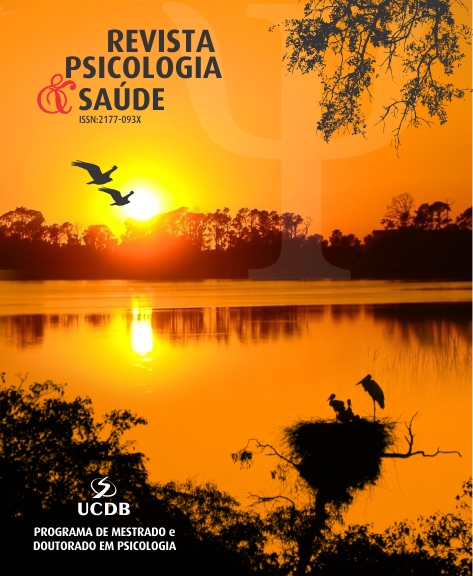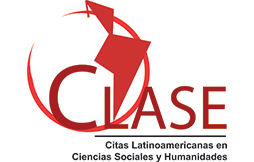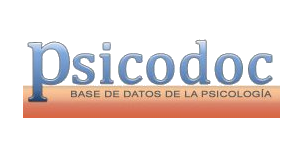Studies on the Diagnostic Instruments for Autism Spectrum Disorder
DOI:
https://doi.org/10.20435/pssa.v1i1.3013Keywords:
autism spectrum disorder, diagnosis, instrumentsAbstract
Introduction: According to data from the Brazilian Institute of Geography and Statistics (IBGE, 2020), Brazil had 3.3 million people with autism spectrum disorder (ASD), of which 45.6 million had some type of disability; however, there are still difficulties in diagnosing, due to the few instruments validated for the Brazilian population, which has caused an increase in the number of people diagnosed with this characteristic, which puts the criteria and referrals for care into discussion in health units or private clinics. The aim of this work is to identify and analyze the set of academic productions that are available on the website of the Coordination for the Improvement of Higher Education Personnel (CAPES) and on PubMed that address ASD diagnostic instruments. Methodology: A systematic review of academic productions was carried out in the CAPES and PubMed databases, from 2014 to 2024. The descriptors were: autism spectrum disorder with the Boolean operator “and” diagnosis, autism spectrum disorder “and “evaluation”. After selecting the productions identified in the aforementioned databases, an integrative analysis of this set was carried out. Results: 5 were analyzed articles, which demonstrated the need for investment in research to build diagnostic instruments that are adapted and validated for the reality of the Brazilian population, since the most cited instruments were DI-R, ADOS (including the ADOS-2 version), CARS and M-CHAT.
References
Anache, A. A., & Corrêa, F. (2010). As políticas do Conselho Federal de Psicologia para a avaliação psicológica. In Conselho Federal de Psicologia (Ed.), Avaliação psicológica: Diretrizes na regulamentação da profissão (pp. 19–30). Conselho Federal de Psicologia.
Alchieri, J. C., & Bandeira, D. R. (2002). Ensino da avaliação psicológica no Brasil. In Conselho Federal de Psicologia (Ed.), Temas em avaliação psicológica (pp. 35–39). Conselho Federal de Psicologia.
American Psychiatric Association. (2014). Manual diagnóstico e estatístico de transtornos mentais (5ª ed.). Artmed.
Assumpção Junior, F. B., & Pimentel, A. C. M. (2000). Autismo infantil. Brazilian Journal of Psychiatry, 22(1), 37–39. DOI: https://doi.org/10.1590/S1516-44462000000600010
Bueno, J. M. H., & Peixoto, E. M. (2018). Avaliação psicológica no Brasil e no mundo. Psicologia: Ciência e Profissão, 38(número especial), 108–117. DOI: https://doi.org/10.1590/1982-3703000208878
Carvalho, M. C. L., Albuquerque, M. C. S., Palitot, M. D., & Chaves, C. M. C. M. (2021). Instrumentos psicométricos de sondagem do transtorno autista: Uma revisão sistemática. Revista Psicopedagogia, 38(117), 433–448. https://doi.org/10.51207/2179-4057.20210035 DOI: https://doi.org/10.51207/2179-4057.20210035
Centers for Disease Control and Prevention. (2023, March 23). CDC finds more children with autism spectrum disorder (ASD) are being identified at earlier ages. https://www.cdc.gov/media/releases/2023/p0323-autism.html. Acesso em 10.abr.2024.
Coutinho, J. V. S. C., & Bosso, R. M. V. (2015). Autismo e genética: Uma revisão de literatura. Revista Científica do ITPAC, 8(1), 1–14.
Patto, M. H. S. (1997). Para uma crítica da razão psicométrica. Psicologia USP, 8(2), 47–62. DOI: https://doi.org/10.1590/S0103-65641997000100004
Primi, R. (2018). Avaliação psicológica no século XXI: De onde viemos e para onde vamos. Psicologia: Ciência e Profissão, 38(spe), 87–97. DOI: https://doi.org/10.1590/1982-3703000209814
De Paoli, J., & Machado, P. F. L. (2022). Autismos em uma perspectiva histórico-cultural. Gesto-Debate, 5(2), 123–136. https://doi.org/10.29327/gestodebate.v5.n2.p123-136
Farias, E. S. D. (2012). Algumas diretrizes para a avaliação psicológica. Psicologia em Revista, 18(2), 351–353. DOI: https://doi.org/10.5752/P.1678-9563.2012v18n2p351
Instituto Brasileiro de Geografia E Estatística. (2023, 7 de dezembro). Censo demográfico 2020: Brasil tem 14,4 milhões de pessoas com deficiência. Agência de Notícias IBGE. https://agenciadenoticias.ibge.gov.br/agencia-noticias/2012-agencia-de-noticias/noticias/43463-censo-2022-brasil-tem-14-4-milhoes-de-pessoas-com-deficiencia. Acesso em 10.abr.2024.
Reppold, C. T., & Noronha, A. P. P. (2018). Impacto dos 15 anos do SATEPSI na avaliação psicológica brasileira. Psicologia: Ciência e Profissão, 38(número especial), 6–15. DOI: https://doi.org/10.1590/1982-3703000208638
Silva, C. C. E., & Elias, L. C. D. S. (2020). Instrumentos de avaliação no transtorno do espectro autista: Uma revisão sistemática. Avaliação Psicológica, 19(2), 189–197. DOI: https://doi.org/10.15689/ap.2020.1902.09
Vianna, G. A., dos Santos, M. F. R., Cavichini, P. A., & Martins, V. B. (2023). Transtornos do espectro autista ao longo do desenvolvimento humano. Brazilian Journal of Health Review, 6(5), 19571–19580. DOI: https://doi.org/10.34119/bjhrv6n5-010
Virués-Ortega, J. (2010). Applied behavior analytic intervention for autism in early childhood: Meta-analysis, meta-regression and dose-response meta-analysis of multiple outcomes. Clinical Psychology Review, 30(4), 387–399. DOI: https://doi.org/10.1016/j.cpr.2010.01.008
Vygotsky, L. S. (2011). A defectologia e o estudo do desenvolvimento e da educação da criança anormal. Educação e Pesquisa, 37(4), 863–869. DOI: https://doi.org/10.1590/S1517-97022011000400012
Vygotsky, L. S. (1989). A formação social da mente (P. Souza, Trad.). Martins Fontes. (Obra original publicada em 1934).
Published
How to Cite
Issue
Section
License

This work is licensed under a Creative Commons Attribution 4.0 International License.
The articles published on journal Psicologia e Saúde holds the copyrights of all texts published by it. Due to that, there is a demand for a letter of copyright cession (see Appreciation). The full reproduction of any article of this Journal in other publications, by any means, requires a written authorization of the Editorial Board. Partial reproductions of articles (abstracts, more than 500 words of text, tables, pictures and other illustrations, sound files) should have the written permission of the Editorial Board and the Authors.












